What if you could build your own home? ‘I’m like a grant away from changing the world’
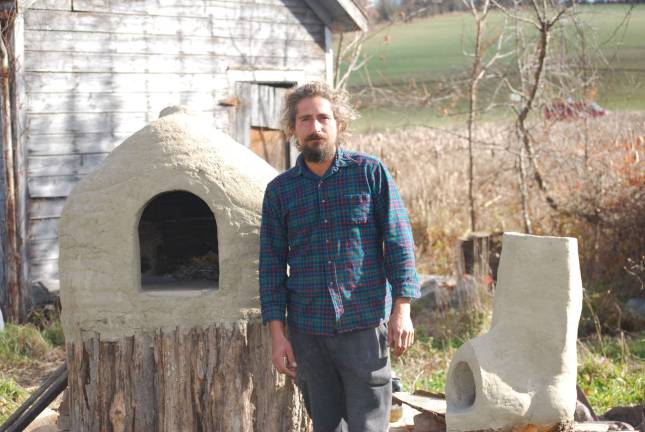
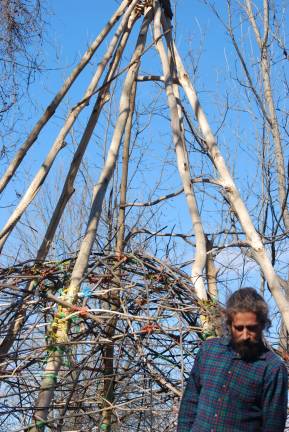
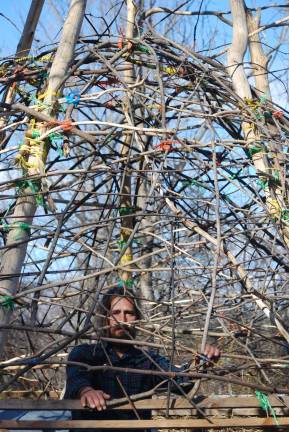
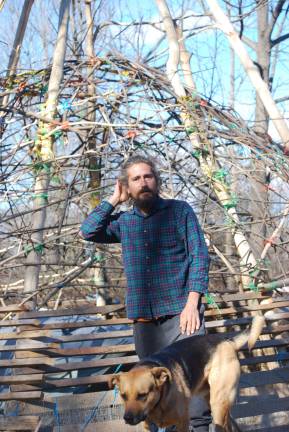
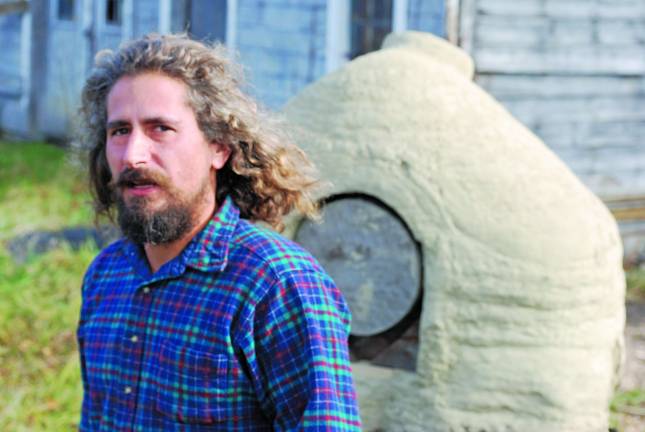
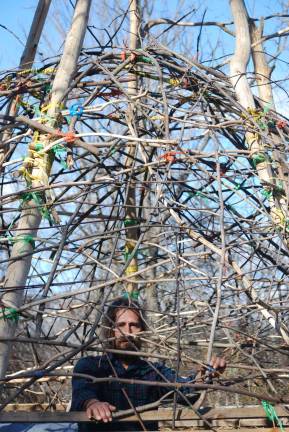
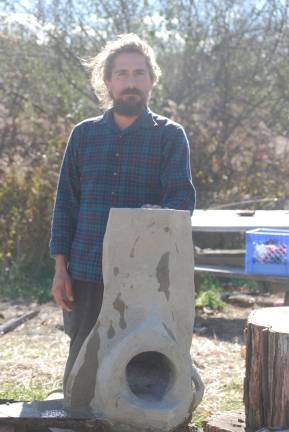
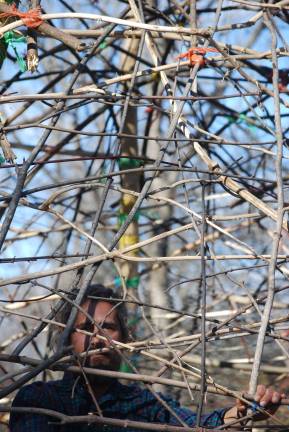
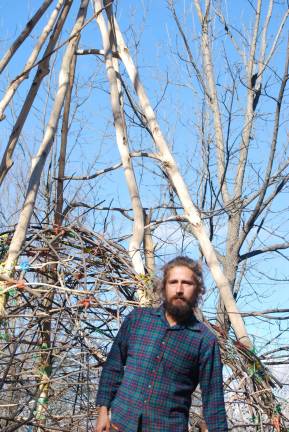
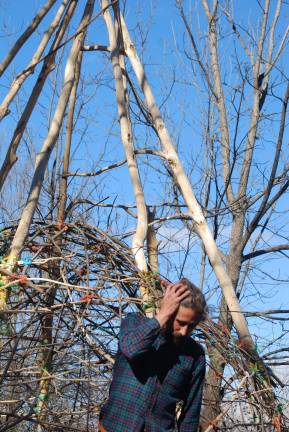
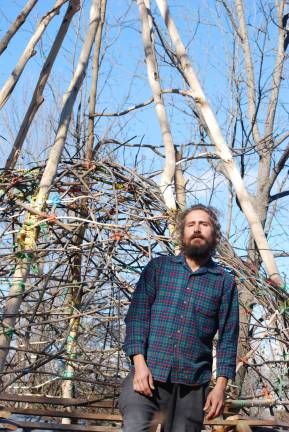
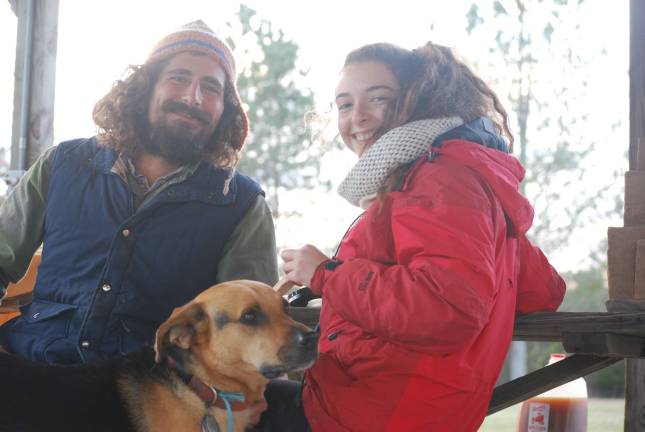
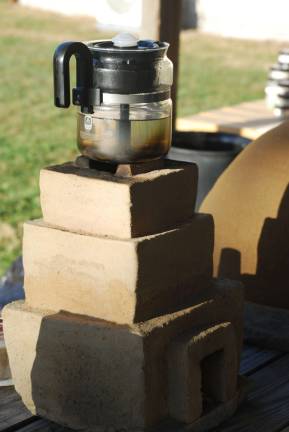
“You know ‘mortgage’ means ‘death contract’ in Latin?”
Laughter.
“It does.”
Jamie Manza has a way of putting things that can startle with their contrary truth.
If you didn’t have a mortgage, instead of working a job you didn’t like, you’d have time to grow your own food, be in nature, be creative. And you’d be living in a perfectly customized house you built with your own hands. You say you’re a city slicker and could never do it? Manza says otherwise.
“Our bodies and brains are designed for us to provide shelter for ourselves, just like every other animal does,” said Manza. “It’s the biggest threat to the capitalist system, if everyone managed to shelter themselves. If people made their own homes, greedy capitalism as we know it would collapse.”
A natural builder by passion and treekeeper by trade, Manza, 37, has hosted workshops around the country teaching people how to build structures like outdoor ovens and saunas using materials Mother Nature provides: stone, sand, clay, straw, wood.
Back home in Warwick, he’s got a more private project underway. Tucked away on his father’s farm, Manza and his girlfriend, Andrea Giuliano, are building a tipi like none you’ve ever seen.
Manza and his dog Dylan lead the way from a dirt road to a clearing in the woods where eight freshly peeled tree trunks are lashed together 18 feet above the ground.
“The tipi is the most efficient building system there is,” he said. “The roof and the wall system are integrated, and there’s no real foundation – or it’s minimal,” he said. “Structurally there’s only one connection, and it’s done with a rope. There’s no cutting or drilling of the wood, and it’s undoable so it’s portable.”
The poles are young maple trees that Manza cut down, then peeled with a draw knife. The plans called for up to 21 poles, but Manza didn’t want to cut down that many. Well, he was going to cut down eight more saplings, to halve the gaps between the larger poles, when he stepped on a yellow jackets’ nest and got stung seven times, and, since he’s allergic, landed in the ER.
Suffice to say he improvised, sticking with the original eight poles.
Inside the tipi, on a bed of straw, is a camping tent that he and Giuliano lived in for about a month this past fall. The tent won’t be necessary once the walls, roof and oven are finished.
The tipi is topped by a domed wigwam roof that Manza created by weaving branches together and lashing them to the tipi poles. The colorful ties, originally used to bind trees during shipping, are repurposed from Manza’s job as treekeeper at his uncle’s Manza Family Farm. The wooden slats that form the bottom of the tipi wall are the dividers used to ship trees.
Eventually, the plan is to cover the wigwam roof with a membrane — a tarp or liner — and plant a living roof on top of that. Manza has begun the laborious process of insulating the walls, first fortifying the sides of the tipi with wire mesh and then stuffing straw inside the mesh. An earthen oven will provide both heat and cooking capacity.
Manza intended to be finished by the winter, but that’s okay. These things are supposed to take time. You realize he has cultivated his reserves of patience when you take one of his business cards.
Are they...? Yep, they are each slightly different, because they are written by hand.
Manza equates the slow house movement with the slow food movement, which calls for working by hand with local ingredients that are nontoxic and minimally processed. The mainstream has embraced slow food, shopping at farmers’ markets, buying organic and growing their own. The slow home movement, meanwhile, is pretty much unheard of, despite the fact that you spend a third of your life in your house. If you’re trying to cut down on your toxicity levels, “shopping at Whole Foods doesn’t do a lot of good if you have new carpets in your house from Loews,” said Manza.
Manza wants his tipi to go undetected, and is thinking about sawing off the top to avoid drawing attention to it. But there’s another spot, an island of farmland on busy Route 94, that thousands of people drive by daily. This is where he can experiment in full view of the world. Where he can prove it.
Manza intends to build a structure here out of cob, a mixture of sand, clay and straw. It will either be a library, or a temple, or a soup kitchen.
Next to the picturesque old farm springhouse, he has already built two cob ovens — a traditional oven for baking pizza and bread, mounted on ancient tree stumps, and a smaller, uber-efficient rocket stove, on which he makes coffee. The clay came from a hole a few yards away.
Manza will probably have to get variances from the building department to build his structure, but a recent change in New York State building code has made it more friendly to earthen plaster and straw bale construction.
“They are leaning towards it, but the building inspector has to understand the concept of it,” said Thom Woglom, a more mainstream green builder in Warwick, who’s into permaculture and knows Manza. Conventional building materials like lumber are certified, Woglom explained, but “with an earthen structure you’re pulling together by hand, there’s nobody saying what kind of dirt is in the bag. Certain inspectors will be more open to it than others. It always comes down to the fact that they need to cover their butts.”
Woglom ticked off a laundry list of other challenges. There are no comparables on the market, so a bank won’t give you a mortgage. There’s the amount of time it takes to build a house by hand in an era when time is money. The risk you’re taking onto your own shoulders that the building will stand, for decades to come, under a load of snow on the roof.
The building regulations are to protect from “people’s own idiocy,” Woglom said. “Some people really don’t know what they’re doing.”
Manza, who studied at the Boston Architectural Center and then the Ashevillage Institute (a natural building school in North Carolina), does know what he’s doing. He chafes at the government telling him what sort of shelter he can or can’t live in, while charging him “extortionist” fees to do so.
If the “building department cares about public safety,” he said, “they wouldn’t let you put toxic materials in your house. It’s a terrible paradigm.”
But the biggest challenge of all is probably people’s conception — or Manza would say, misconception — of what an earthen house is.
“At this stage in my life I can’t see being in an earthen structure,” said Woglom, 63, who lives in a passive house in the village. When he gets home from work, he just wants to kick off his shoes and watch TV on the couch in his socks. “Your generation is moving that way, to be more into the earth.”
You can be wired up the wazoo in a natural home, said Manza. All you need is solar panels or a wire run to the nearest utility pole. It will be cozier and cheaper to run than other houses, too, because the walls radiate heat gathered passively over the course of the day.
It’s price, though, that’s going to bring folks around, said Manza. Two people can build an earthen cottage in a year, he says, with materials that are free or nearly so.
Manza knows he’s onto something revolutionary. He also knows there’s only one way to prove his point.
“I have this nine acre canvas-slash-stage to demonstrate these ideas,” he said, “instead of just talking about them.”